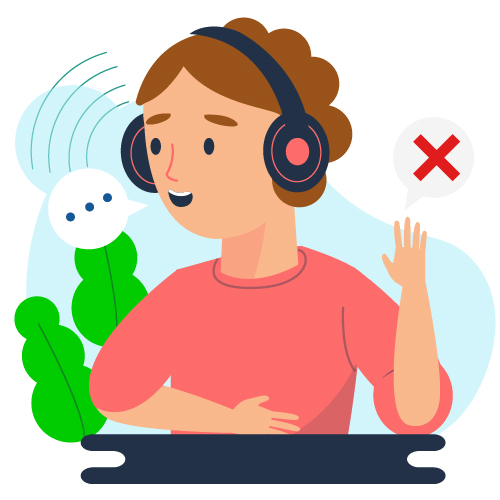
IELTS Listening Tips – Top 10
Getting band 9 for IELTS Listening is conceivable?
The appropriate response is Yes! You want to do a few things before the test and a few things you want to focus on the test. You can extensively work on your score by following these top10 IELTS Listening tips and even get a band 9! You will find here the best 10 IELTS Listening tips to get the ideal score on the IELTS Listening test:
Before the test
Further, develop your overall listening abilities.
The objective of the IELTS Listening area is to test your listening abilities. Try not to utilize practice tests to work on your score: it’s insufficient! They will assist you in getting comfortable with the test. However, they won’t much further develop your listening capacities. It is significantly more viable to do different listening works out. Pay attention to general listening materials (radio
reports, TV shows, documental projects, and so). Solely after that, do IELTS Listening practice tests.
Refine your subject language
Area 3 is quite often about instruction. For instance, students and a coach discuss a task. Gain proficiency with all the jargon you can about learning at college. This way, you will comprehend this segment better.
Word types
Skirt the inquiries and conclude which sort of word fits in each hole. Is it a thing, action word, qualifier, or descriptor? Compose ‘N’ for the item, ‘V’ for the action word. It will assist you with zeroing in on the particular word structures while tuning in.
“Plugin” the circumstance
Attempt to find out about the circumstance. Before each part, you will be given a short presentation: ‘Presently, you will hear a discourse between… ‘ or ‘you will hear a talk ‘ This data isn’t composed on the inquiry paper, so be mindful. Note: who are the speakers, why they are talking, and where are they. It will make understanding the remainder of the recording a lot more straightforward.
Try not to free consideration.
Keep in mind; you will just hear the sound once. So assuming that you didn’t hear a few words and disregarded a few inquiries, relax! Leave them clear and spotlight on the genuine part. Survey those inquiries toward the finish of the segment; if not, you will miss more inquiries and tangle in the recording. You should peruse, compose and listen all simultaneously.
Keep an eye out for words-pointers.
Tune in for words-pointers, for example, nonetheless, however at that point, at last. They assist you with expecting what the speaker will say.
Try not to compose answers excessively fast.
Many understudies fall into this snare: they take it for the proper reply when they hear the required data. However, sometimes, this data is rehashed or revised further in the segment. Model:
Sam: Thank you! I’ve accepted your email. So it is loren-hanson@gmail.com.
Loren: No-no! You have mixed up; it is loren-hamson@gmail.com, spelled with M.
Sam: Oh, I’m heartbroken…
Check for senseless errors.
After each segment, you have 30 seconds to look at your replies. Take a look at spelling, plurals, and word structures. Recall that central, accurately composed answers will acquire focuses.
Move answers precisely
Toward the finish of the listening test, you will have 10 minutes to move your replies into the appropriate response sheet. Furthermore, frequently understudies get befuddled in the numeration! Therefore, as you record your answers, register that they fit with the right numbered space. As such, ensure that question 7 goes into space number 7.
Try not to leave any clear replies!
You will not lose marks for erroneous replies, so it is wiser to compose something in the appropriate responses box regardless of whether you know the appropriate response. Then, peruse the inquiry again and make a theory!



